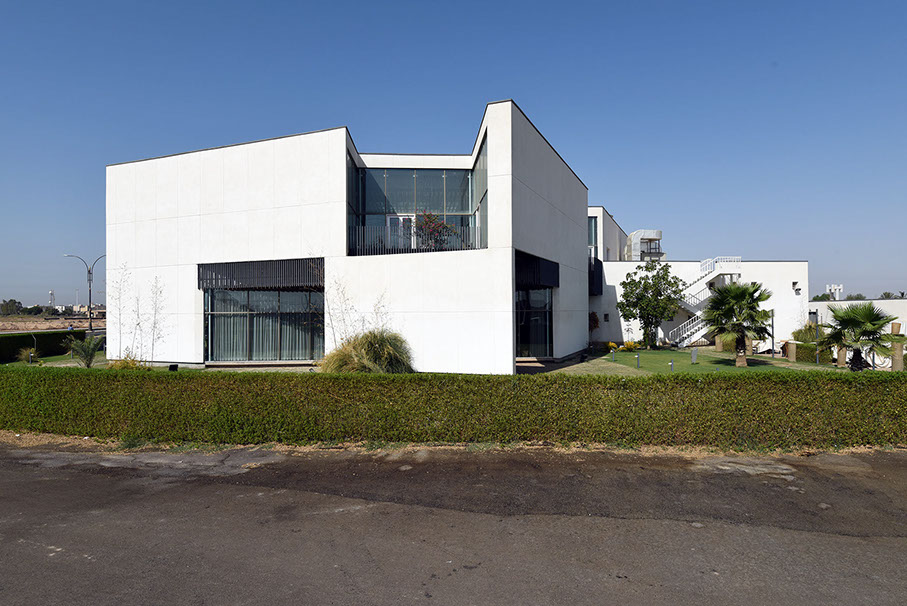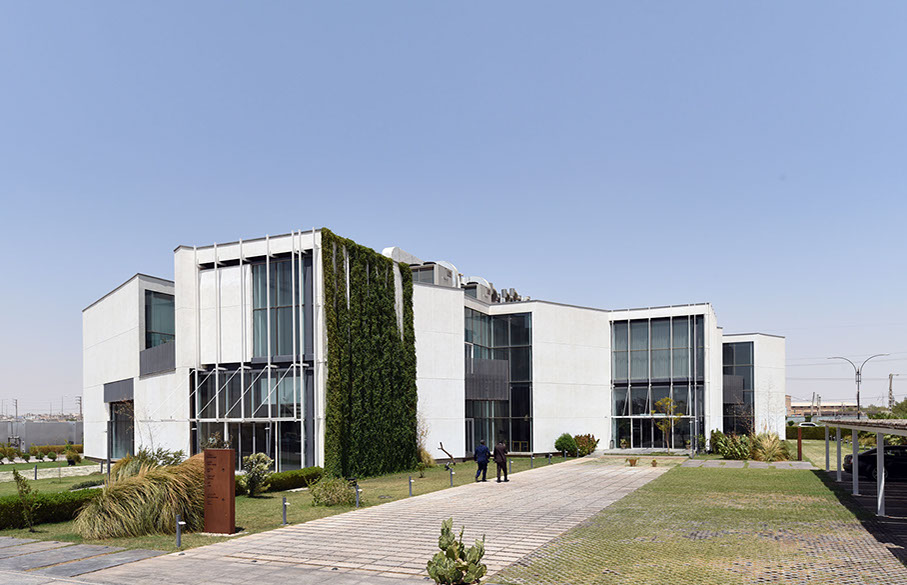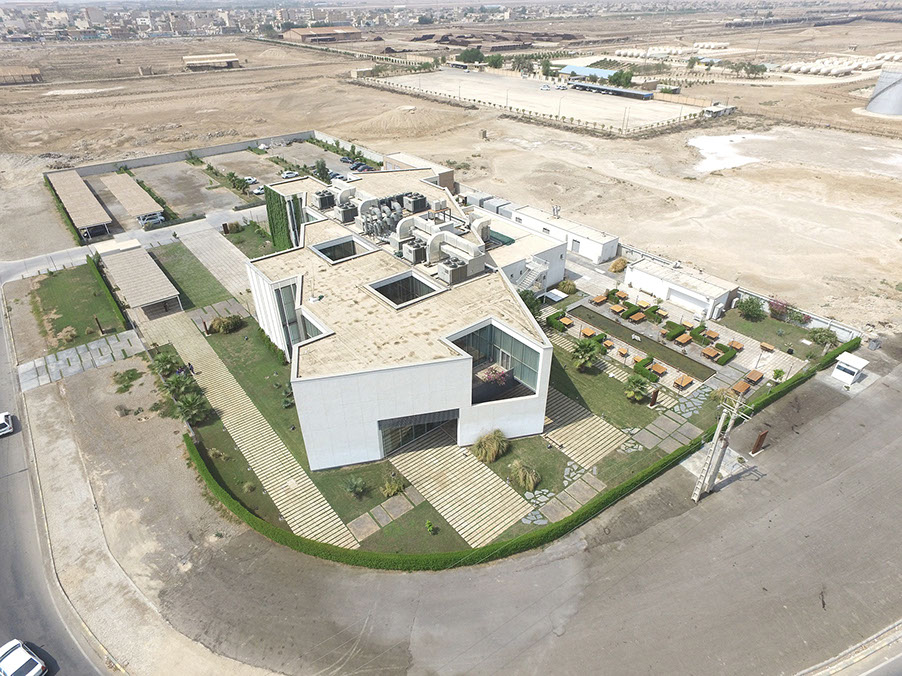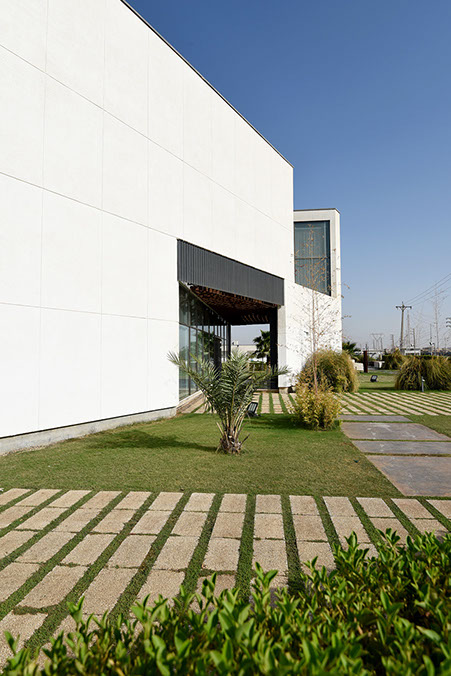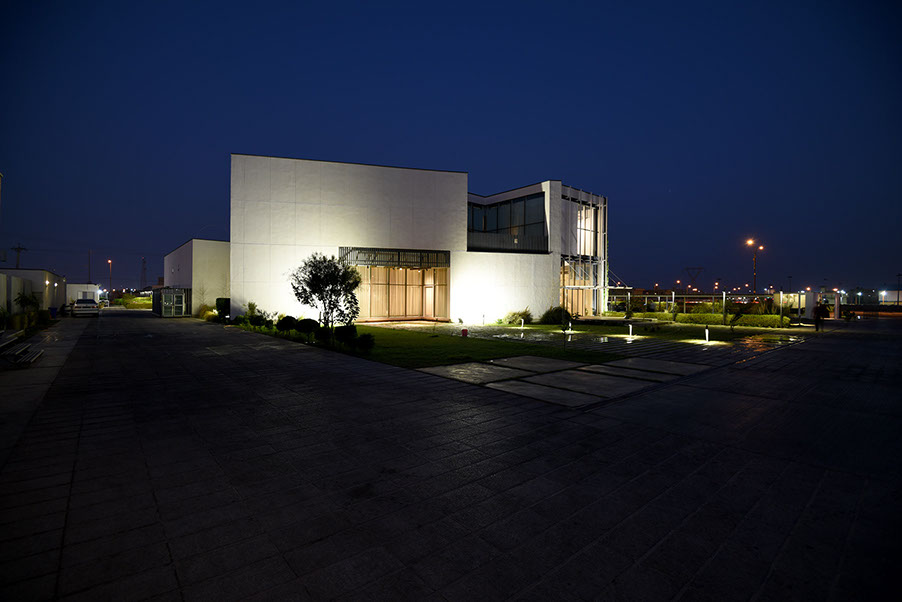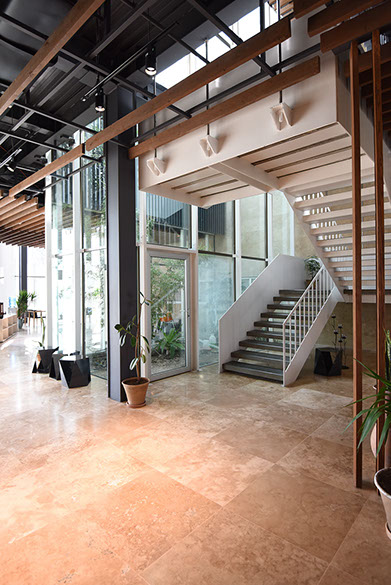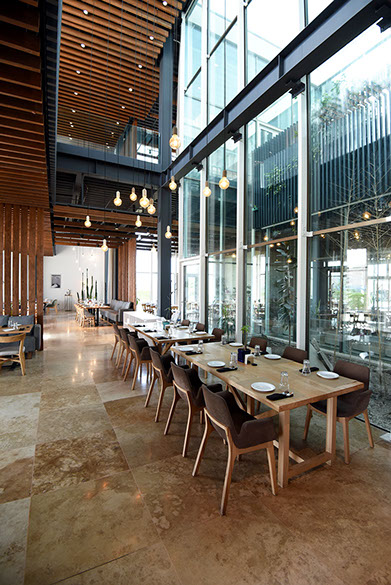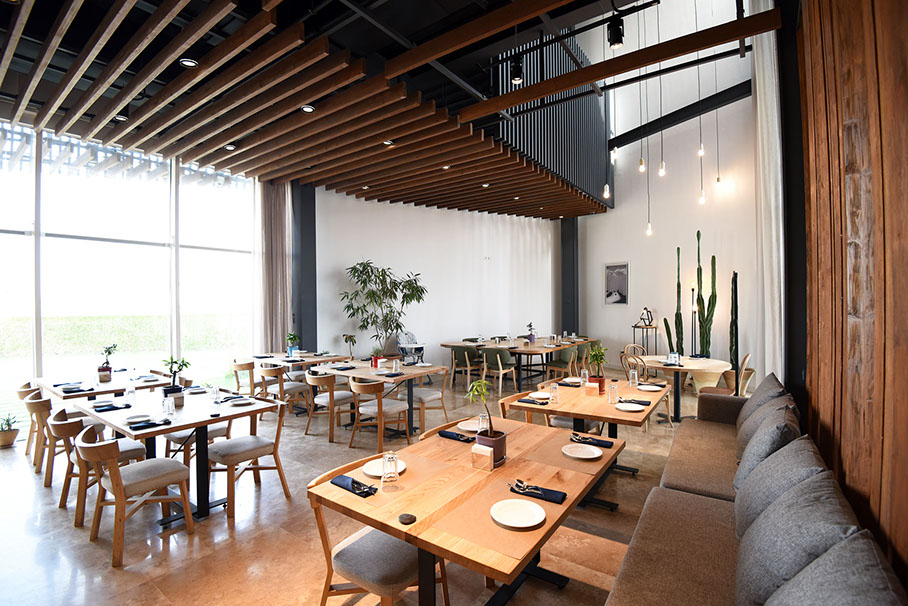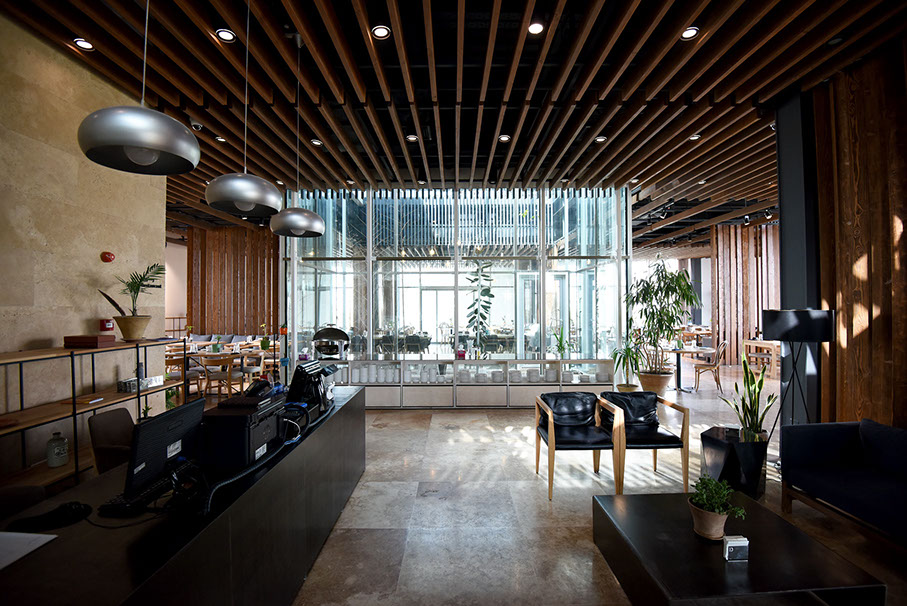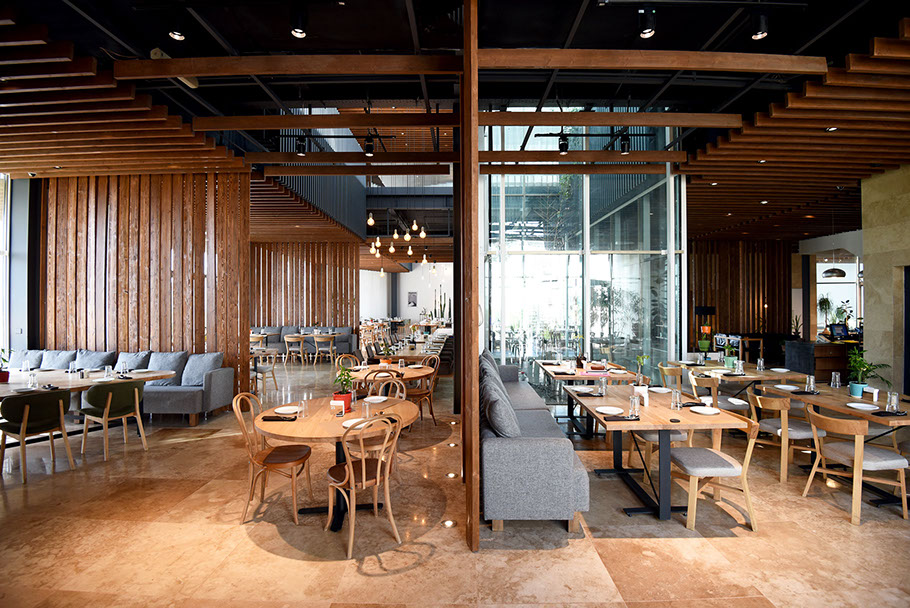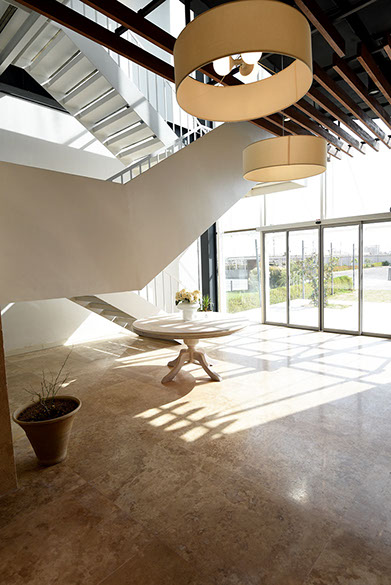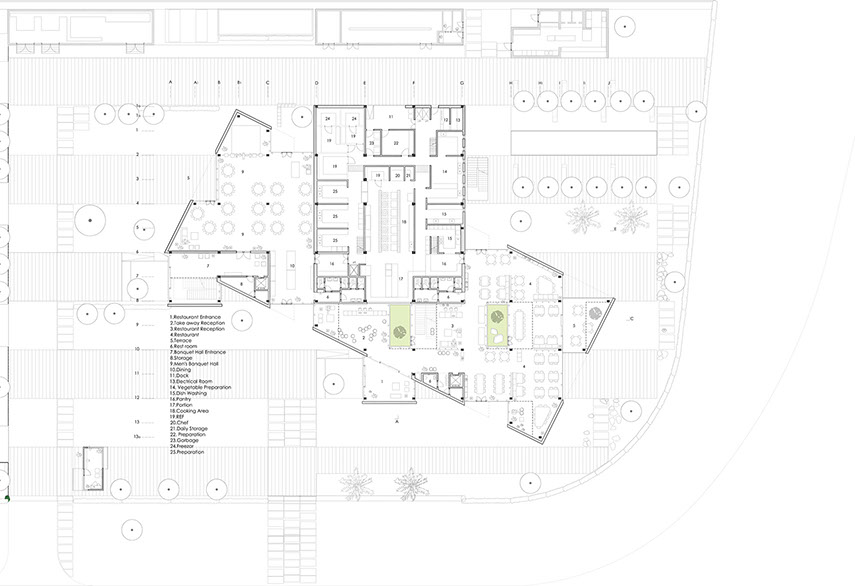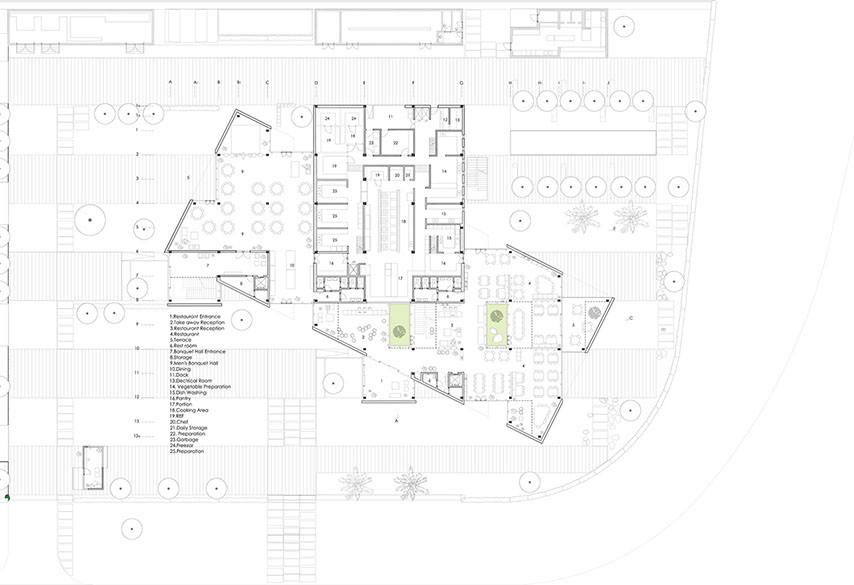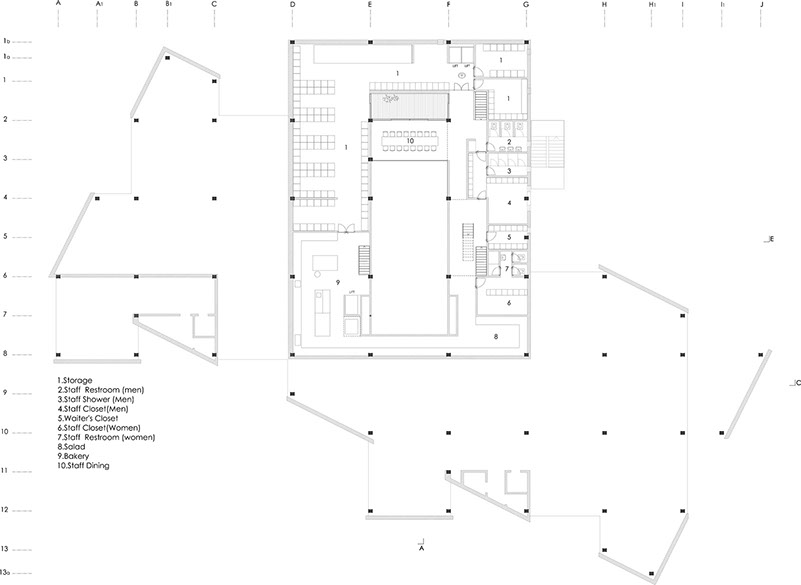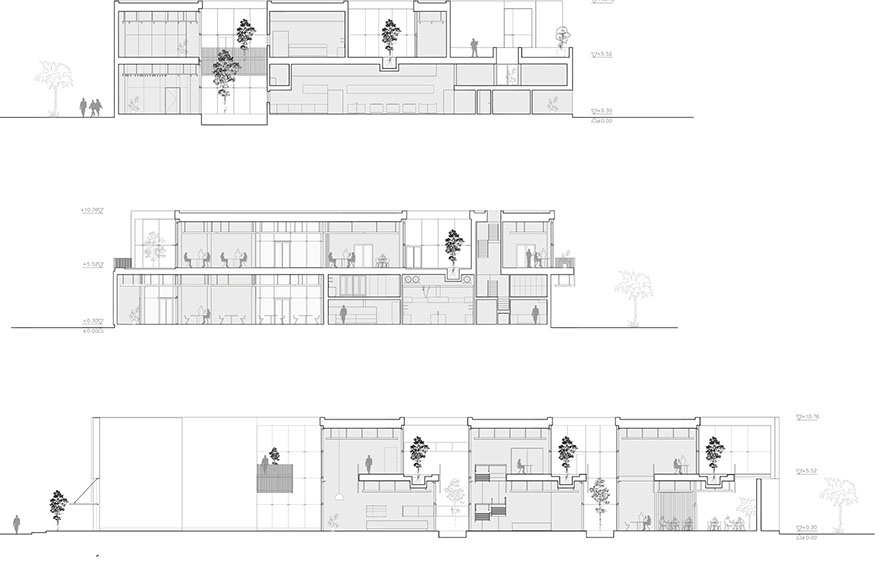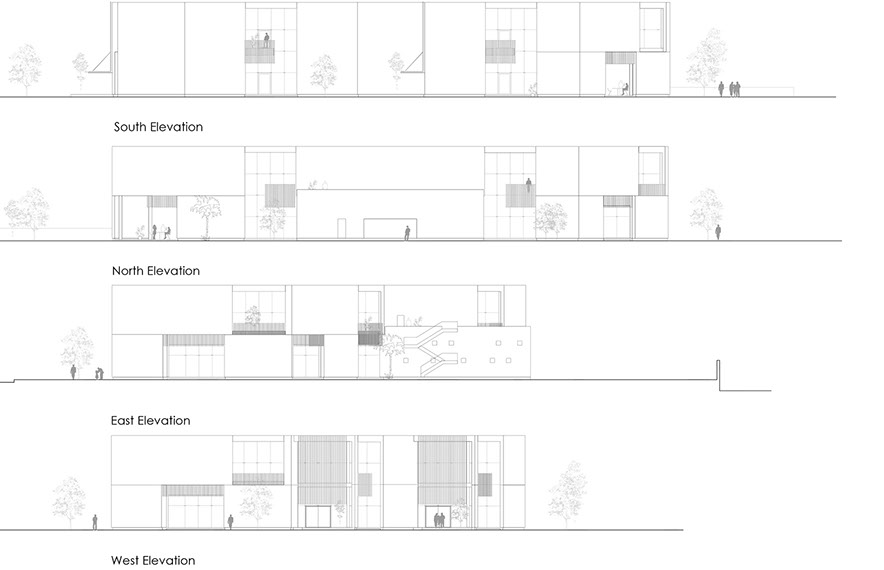DAA Hall & Restaurant
Mahshahr, Iran
2017
Design & Construction
Photography
SABK Office
Integrating indoor and outdoor spaces, volume orientation, natural air circulation and light, controlling the direct sun exposure and bringing in the green space were the main goals of the design team to accomplish in DA restaurant and reception hall.
On a 10.000sq.m plot, the project was located between the old Mahshahr and the residential area known as “industrial zone” in an undeveloped part of the city. The site was divided into two main areas, the east side of the land contains the building due to its ease of access from main streets whereas the parking area, doubling as a substitute land for probable future construction of a commercial building, were situated on the west side. Consequently, the building is formed in the East-West direction facing North. The building orientation has created two triangular spaces in North East and South West corners of the site. The Southern edge of the land is allocated to the main entry as well as a private parking area for the property owners, whereas the Northern edge contains the garden restaurant providing a vibrant night life outdoors.
In order to integrate the building with the landscape (surroundings) and create transparency, the concept was based on perpendicular stripes sectioned from north and south. The crossovers forming hollow spaces in between let the sunlight in and provide natural air circulation and indoor green spaces at the center of the building. The volume is designed in a way to have the most solid surfaces in the main facades (to keep the facades largely opaque ) and to locate openings in setbacks to avoid direct sunlight exposure.
The building has three main parts: public and VIP restaurants, and café on the East side in two levels, men's and women's reception halls on the West side in two levels and the commercial kitchen positioned at the heart of the building in two levels and a mezzanine, each with a separate entrance.
In the course of the project, the design team were asked to raise the output capacity of the kitchen to serve up to 4000 dishes a day, so to accommodate all the needs, the building expanded based on the existing pattern through the north edge and a mezzanine was attached between the ground floor and the first floor to place the food storage, locker room, staff dining space, laundry and bakery. Therefore, the spacious kitchen measuring 1000sq.m would serve all the departments.
After the unpredictable economic inflation in 2013, the project’s cost estimation dramatically changed. To keep the project going it was inevitable to decrease the costs. So instead of referring to suppliers for needed products, the team decided to design some of the project’s details with a much lower cost, among which was the design and making the frame-less windows which resulted in a multi-hundred million Toman cost reduction. As such in the interior design, most of the furniture were designed and made by the design team. The project being constructed far from the capital and lack of professional manpower in the city was another issue. However, this project was aimed to be accomplished by local workers relying on the project manager's engineering knowledge. Another challenge in this project was the design of the commercial kitchen which was solved through the collaboration of the design team with a food industry expert. To do this, all the basic functions based on the proposed menu and kitchen’s capacity, needed spaces and their proportions were defined, the circulation and vertical/horizontal interconnections of spaces and equipment were taken into consideration.
